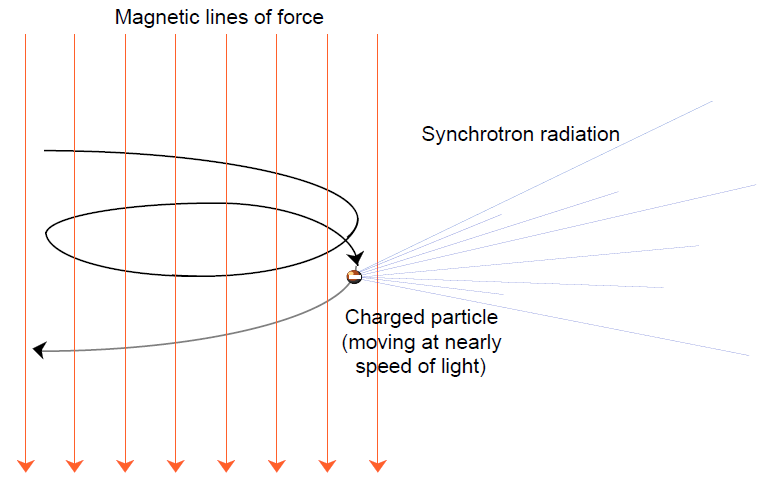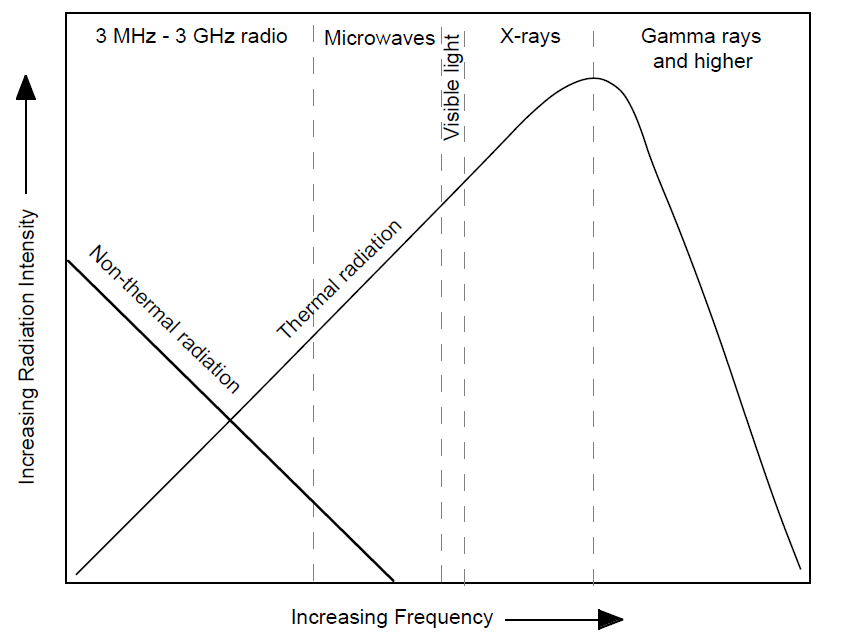


 الفيزياء الكلاسيكية
الفيزياء الكلاسيكية
 الكهربائية والمغناطيسية
الكهربائية والمغناطيسية
 علم البصريات
علم البصريات
 الفيزياء الحديثة
الفيزياء الحديثة
 النظرية النسبية
النظرية النسبية
 الفيزياء النووية
الفيزياء النووية
 فيزياء الحالة الصلبة
فيزياء الحالة الصلبة
 الليزر
الليزر
 علم الفلك
علم الفلك
 المجموعة الشمسية
المجموعة الشمسية
 الطاقة البديلة
الطاقة البديلة
 الفيزياء والعلوم الأخرى
الفيزياء والعلوم الأخرى
 مواضيع عامة في الفيزياء
مواضيع عامة في الفيزياء|
Read More
Date: 2-9-2020
Date: 1-9-2020
Date: 3-5-2017
|
Synchrotron Radiation
Notwithstanding the vast number of sources of thermal emissions, much of the radiation from our own galaxy, particularly the background radiation first discovered by Jansky, and most of that from other galaxies is of non-thermal origin. The major mechanism behind this type of radiation has nothing to do with temperature, but rather with the effect of charged particles interacting with magnetic fields. When a charged particle enters a magnetic field, the field compels it to move in a circular or spiral path around the magnetic lines of force. The particle is thus accelerated and radiates energy. Under non-relativistic conditions (that is, when particle velocities are well-below the speed of light), this cyclotron radiation is not strong enough to have much astronomical importance. However, when the speed of the particle reaches nearly the speed of light, it emits a much stronger form of cyclotron radiation called synchrotron radiation.
Emission of Synchrotron Radiation

Quasars are one source of synchrotron radiation not only at radio wavelengths, but also at visible and x-ray wavelengths.
An important difference in radiation from thermal versus non-thermal mechanisms is that while the intensity (energy) of thermal radiation increases with frequency, the intensity of non-thermal radiation usually decreases with frequency.
Relative Variation of Thermal and Non-thermal Radiation Emissions




|
|
|
|
التوتر والسرطان.. علماء يحذرون من "صلة خطيرة"
|
|
|
|
|
|
|
مرآة السيارة: مدى دقة عكسها للصورة الصحيحة
|
|
|
|
|
|
|
نحو شراكة وطنية متكاملة.. الأمين العام للعتبة الحسينية يبحث مع وكيل وزارة الخارجية آفاق التعاون المؤسسي
|
|
|